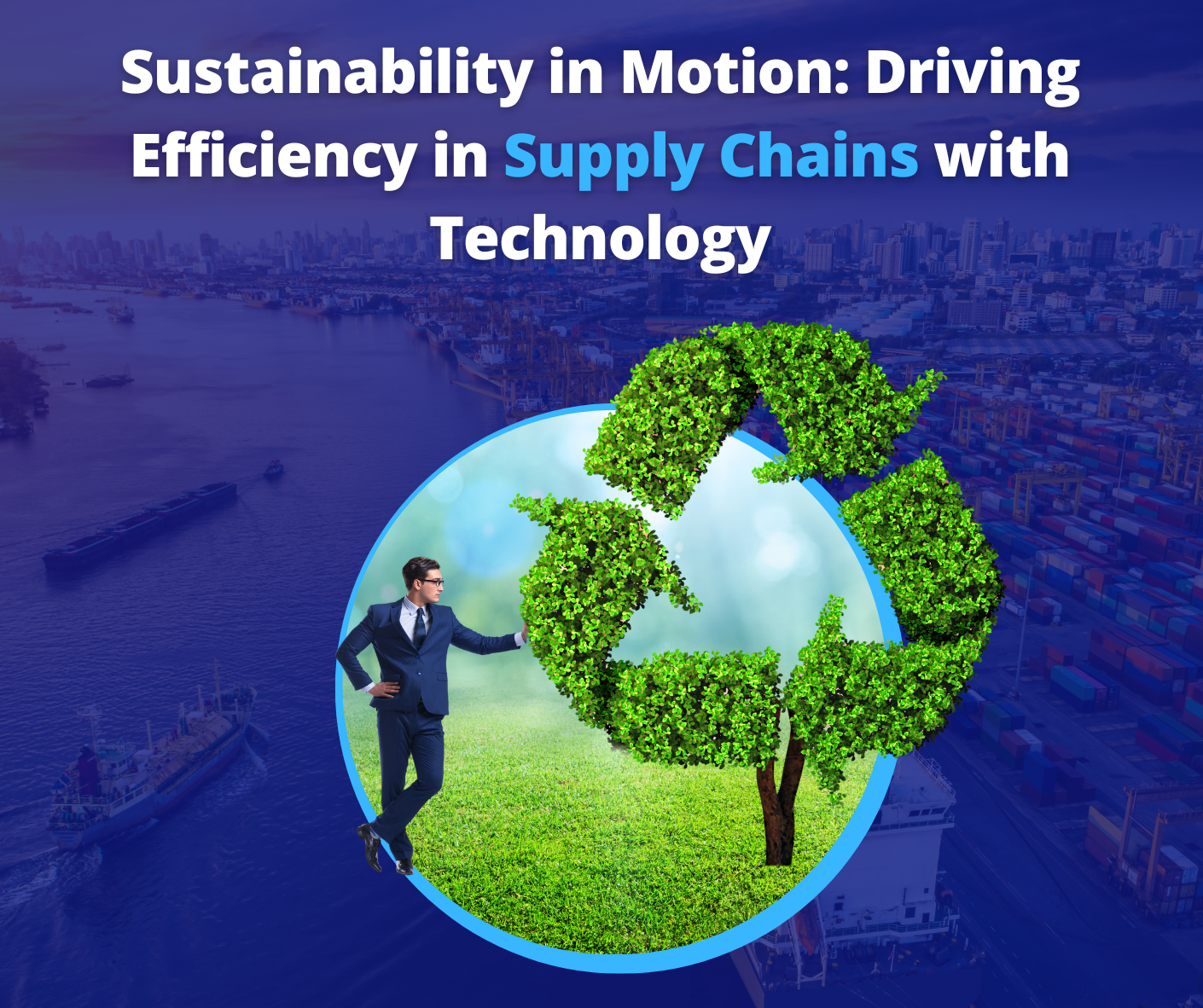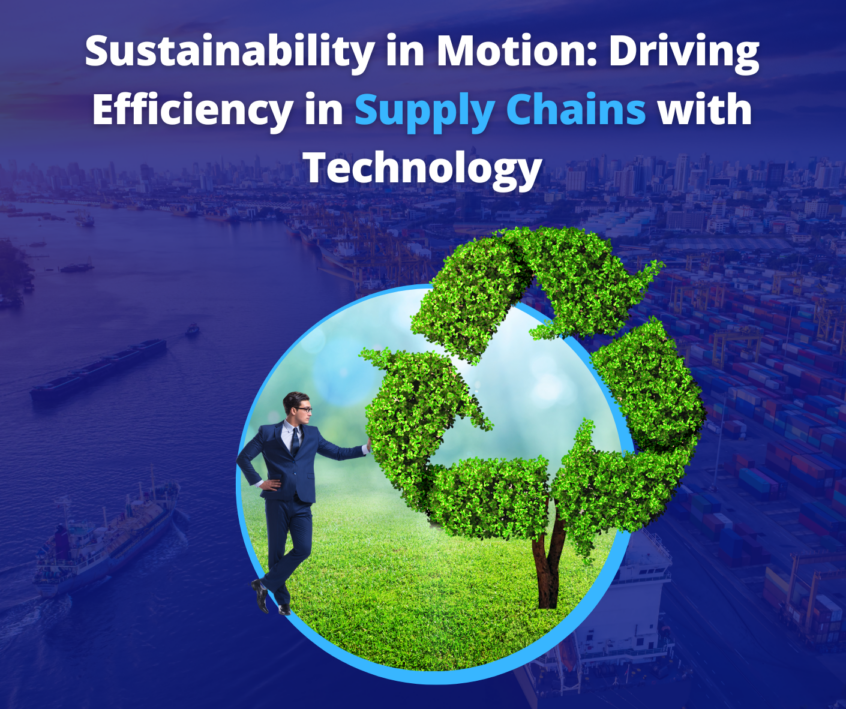
Leveraging Intelligent Technologies and Collaboration to Achieve Operational Excellence
Businesses must balance different variables when designing and implementing a supply chain. For instance, the priorities of efficiency and cost may not be consistent with the need to deliver appropriate customer care. Yet, the desire to save costs and make profits may not be consistent with the need for resilience and corporate social responsibilities. Additionally, taking risks may not chime well with building resiliency within the business model. It is in this crowded context that issues of sustainability have been introduced.
A new Oxford Economics study of 1,000 supply chain executives spread across the globe emphasizes the magnitude of these competing demands and the renewed focus on sustainability. Several themes have emerged from the report. For instance, customers are increasingly expecting more from their supply regarding high-quality services and products delivered on time. Others are looking for strong collaboration opportunities and improved visibility throughout the supply chain to meet all customers’ expectations. Intelligent technologies are part of this equation as an effective response strategy.
These technologies are meant to mitigate some of the business risks involved when operating an extensive planning process. Whereas businesses and their leaders are increasingly aware of the need for sustainability, the exact implementation modalities and approaches are still contested. Meanwhile, there is an operational requirement to increase speed so that the service delivered is as responsive as possible. For instance, 4 out of every 10 respondents in the Oxford Economics study indicated that real-time responsiveness was their top challenge. Then, 34% indicated that meeting customer demand was their main problem.
Finding the right balance in customer care
The results of the Oxford Economics study explain the counterintuitive need to deliver a better quality product or service while simultaneously increasing the speed of interactions with customers. The key question is how these two business objectives can be harmonized so that they do not place an unsustainable burden on businesses. In doing so, it is important to recognize that there is a lot of value in collaboration and visibility, even beyond the boundaries of an organization and within its various departments. To that end, businesses are advised to operate in the most agile and responsive way.
This allows entrepreneurs to maximize efficiency without necessarily giving up on customer care. There will be many silos in organizations, businesses, and industries. However, those silos must find a way of working better together to overcome some of the challenges of the business environment. The Oxford Economics study revealed that 54% of respondents had a business strategy that had been properly defined. Additionally, 52% indicated internal and external collaborations were a critical protective factor when managing risks. One of the instrumentalities towards this goal will be technology.
Using technology for risk-resiliency
Since many organizations anticipate geopolitical upheavals to negatively impact their service delivery, technology will increasingly become an important response. In the Oxford Economics study, 43% of respondents supported this view. Meanwhile, 53% indicated that local and regional vendor networks could strengthen their supply chains in this respect. This compares with 40% who suggested that diversifying sourcing strategies is an appropriate response. Indeed, half of the respondents indicated that nearshoring or onshoring the supply chain was critical to improving and maintaining good customer experiences. Additionally, 49% showed that changing their service and product delivery modalities was the best response. This compares with the 46% who prioritized better demand and supply forecasting as the best response.
Technology is the thread that links all these options. Hence, the expectation of using intelligent technologies such as predictive analytics, ML, and AI. In fact, 57% of participants admitted to deploying intelligent technologies to improve their supply chain. Another 46% indicated that investments in technology would help streamline their processes. The statistics for predictive analytics were 40%, while those for visibility were 37%. The same percentage focused on supply chain operations. Ultimately, the demands of streamlining operations require the injection of technology to harness its potential efficiency.
The moral and business case for sustainability
Unlike in the recent past, sustainability is no longer considered a burdensome cost for business. Instead, there is a moral and business case for making the industry more sustainable in operations. Customers certainly anticipate that contemporary business will address their sustainability concerns. During the Oxford Economics study, some respondents were noted for taking extraordinary steps to achieve sustainability throughout their supply chains. Indeed, these companies (60%) were more likely to consider their supply chain a competitive differentiator than the non-leaders (47%). The leaders (74%) were more likely to place supply chain executives in positions of strategic influence in the company when compared to non-leaders (47%).
These companies (69%) put the customer first based on their product value-chain decisions compared to the non-leaders (47%). Such efforts are reflected in the differentials in customer satisfaction among the leaders (60%) compared to the non-leaders (48%). The same differentials were reflected in employee satisfaction levels (24% versus 13%), suggesting sustainable companies are happier organizations. Indeed, sustainable actions positively impact perceptions in the market share (31% versus 14%) and branding (60% versus 49%). Based on its findings, the report made key recommendations.
The key outcomes and recommendations for business
The overall recommendation is that companies should be more sustainable to foolproof their supply chain models and overall branding. This can be achieved by:
- Ensuring supply chains are part and parcel of planning and strategy: The ability to predict trends can make the difference between surviving and thriving.
- Foolproof the future against known and anticipated risks: Accurate real-time data can protect the business from shocks. It is also a crucial aspect of good decision-making.
- Unleash the power of partnerships and collaboration: These are issues that are best dealt with in union rather than disunion. The most strategic enterprises will ensure departmental and sectoral silos are better coordinated and harmonized to engage with a challenging environment.
- Leverage technologies as a business asset: The use of modern advanced technology will be an essential aspect of responding appropriately to a demanding market. That means paying attention to machine learning and artificial intelligence and training human staff to use them.
- Go and remain green: The most successful businesses will be the ones that embrace and authentically implement the sustainability agenda. This satisfies customers and creates a foundation for protecting the business from shocks.
Wrapping up
The Oxford Economics study has provided important insights into the management of the supply chain in current times. One of the emerging patterns is the increasing demand for high-quality services delivered efficiently and sustainability. Therefore, modern technology is an important instrumentality in achieving these goals.



